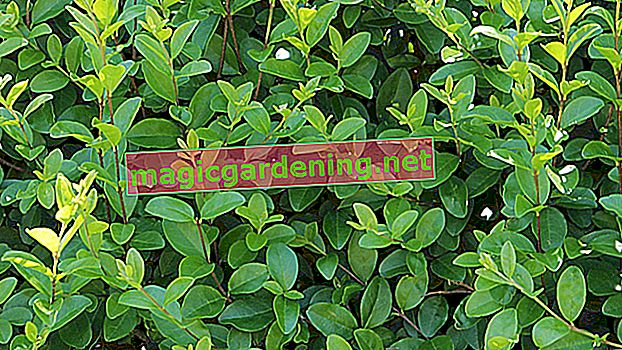
Privet species - a brief overview
Privet belongs to the olive family and is also native to our latitudes. It is very robust, mostly hardy and very easy to care for.
also read
- Echinopsis comes in numerous species
- Planting privet - what do you have to consider?
- A good location for the privet
The gardening trade has numerous species in stock, all of which are suitable for planting as a hedge or as a single shrub. Privet can also be grown in a bucket or as a bonsai.
Well-known and frequently offered types of privet
| Botanical name | Variety name | leaves | Location | particularities | |
|---|---|---|---|---|---|
| Ligustrum japonicum 'Variegatum' | White Japanese privet | medium green | Sun, partial shade | ||
| Ligustrum obtusifolium regulianum | Bushy privet | medium green | Sun, partial shade | bulky growth | |
| Ligustrum ovalifolium | oval-leaved privet | dark green | for shady locations | ||
| Ligustrum ovalifolium 'Aureum' | Gold privet | green with a yellow border | sunny | conditionally hardy | |
| Ligustrum vulgare | Common privet | medium dark green | all locations | very robust variety | |
| Ligustrum vulgare 'Atrovirens' | Black-green privet 'Atrovirens' | blue green | all locations | keeps foliage for a long time | |
| Ligustrum vulgare 'Lodense' | Dwarf candy | green | Sun, partial shade | very frost-resistant | |
| Ligustrum sinensis | Chinese privet | green | as bright as possible | not hardy |
Beware: the berries are poisonous to humans!
The privet blooms in spring and produces small, white clusters of flowers that are particularly fragrant in the evening. They resemble small lilac flowers and are very popular as a food source for insects.
The berries that ripen in autumn are slightly poisonous and should therefore not be consumed. They are very popular with birds.
Privet isn't evergreen!
Even if you read it again and again - privet is not an evergreen. This misconception has prevailed because some species such as Privet atrovirens keep the foliage on the bush for a very long time. Atrovirens does not shed the leaves until the winter. The lighter the privet is, the longer the leaves stay on the bush.
Most privet species are hardy
Privet is a very robust type of shrub that does very well in our locations. Most species are hardy and can tolerate frost down to minus 10 degrees without any problems, at least when they are a little older.
Light winter protection such as a mulch blanket can be useful for young plants. Even if parts of the shoots are frozen off, the shrub recovers very quickly and sprouts again in spring.
A well-known variety that is not hardy is the Chinese privet. It is cultivated either as a bonsai in the house or as a container plant and overwintered in the house.
Tips
For many garden owners, the question arises as to whether they should prefer privet or cherry laurel. From an ecological point of view, privet is always preferable. Its flowers and berries are valuable food for the local fauna.








